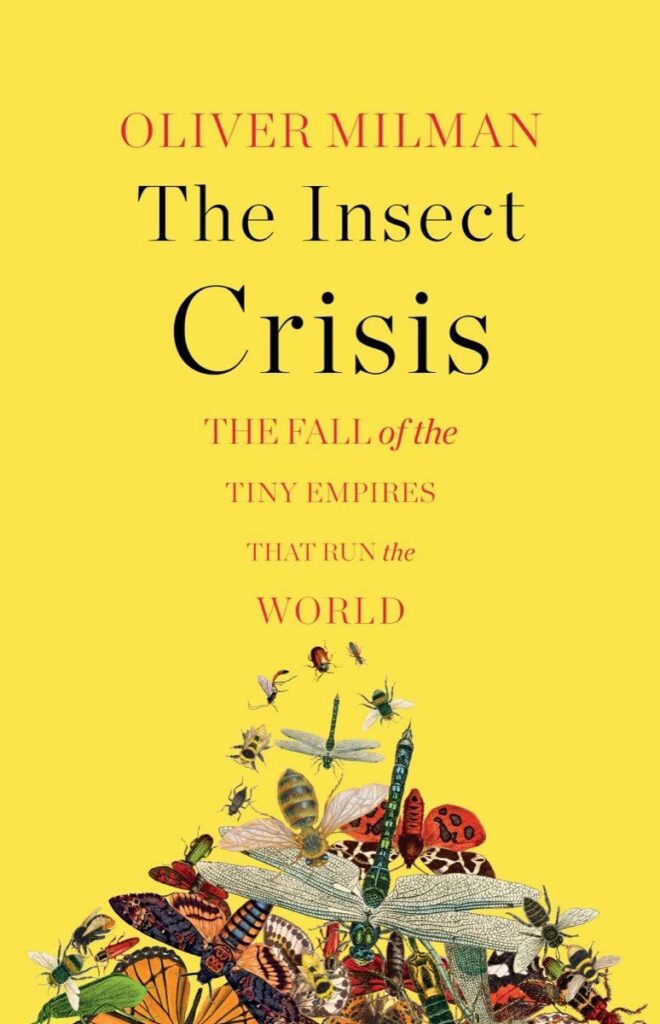
By Oliver Milman
W. W. Norton & Company, 2023
272 pages, paperback, $17.95
Three quarters of known animal species are insects. From pollinators to pests, dinner to decomposers, insects are integral to healthy ecosystems. So, when there is a huge decline in populations, scientists get worried. And they should, because a lack of caterpillars means no baby birds. More importantly, from my point of view, no flies means no chocolate!
The loss of insect biodiversity, and biodiversity in general, is as great an emergency as the climate crisis says Oliver Milman in “The Insect Crisis.” Chapter by chapter he explores this hidden emergency, beginning with the intricate ways insect lives are woven into ours. He takes us into the field with scientists and farmers, and shows how data is collected and analyzed.
To understand the scope of the crisis, Milman begins by highlighting some of the winners and losers in the insect survival game. The big losers are bumblebees, at least in North America. “The abundance of four species of bumblebee has plummeted by as much as 96 percent in recent decades,” he writes, noting that their ranges have shrunk by nearly 80%. Beetle populations have declined steeply since the 1970s. Included in those losses are dung beetles that, by their actions, increase soil fertility and improve soil structure. In the United Kingdom, moth populations are down by a quarter and butterfly populations are half what they used to be. And yet, Milman notes, chemical companies continue to sell insecticides and people continue to refer to insects as “creepy crawlies.”
In one chapter, Milman focuses on the problems birds face when insect numbers decline. It takes, on average, 200,000 bugs to raise a barn swallow chick to maturity. Research already shows the shrinking numbers of some bird species, many of them common backyard birds. In another chapter he looks more closely at the impact of chemicals and weed-free fields. There’s a role for weeds in farming, Milman maintains. Fields need about 10% weed cover to support enough insects for a functioning food chain that feeds nearby birds which, in turn, eat insect pests in those fields. He also suggests some minor changes that help boost insect numbers, whether you’ve got a big garden or a postage-stamp yard. He’s a big fan of clovers, thyme and even dandelions.
Milman devotes three chapters to show how a warming climate sets off a cascade of impacts on plants and pollinators. Not all insects will be losers, he notes. As areas warm, other insects move in: like mosquitoes. He then provides an up-close look at how the changing climate is affecting honeybees and monarch butterflies.
“Reversing our destruction of insects can seem a complex challenge,” Milman writes. Addressing the crisis might be as simple as stopping some of the things we are doing. We could stop using certain chemicals. We could allow wild plants to grow around the edges of fields. We could stop mowing lawns and raking leaves. We could turn off outside lights at night. But we need to do something, Milman warns, because we ignore the insect crisis at our peril.
Sue Smith-Heavenrich, Candor, New York
